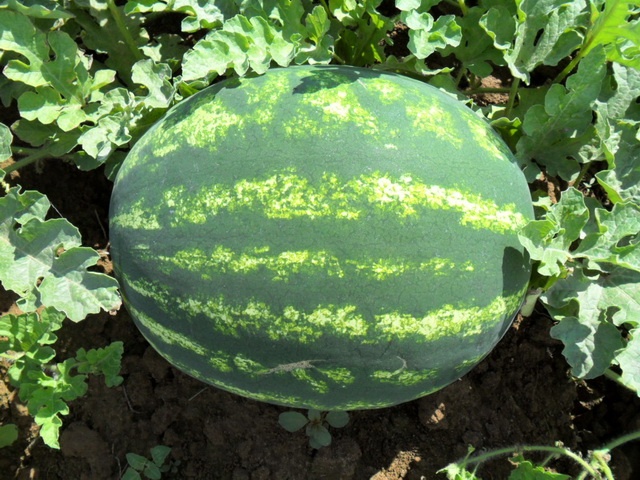The producer is considered an early ripe grade of watermelon. It is popular among farmers primarily for its yield, disease resistance and juiciness of the fruit. In this article we will talk about the description and characteristics of watermelons producer. And also we will learn about the features of agrotechnics of this type.
Table of contents
Description and characteristics of the variety of watermelon producer
Watermelon Producer bred by Americans at the end of the 20th century. It is believed that the producer - an improved version of the watermelon Crimson Sweet. The difference of the new version is that it is better protected from such popular diseases as anthracnose and rot, therefore its yield is extremely high.
Producer weighs from 10 to 20 kg, depending on the conditions and technologies of cultivation. The scourge reaches 30-40 cm. It has an oval shape. The bark of medium density, with alternating green and light green stripes. The flesh is bright red, saturated color. In the heart of the seeds are black. Taste-sweet, sugar.
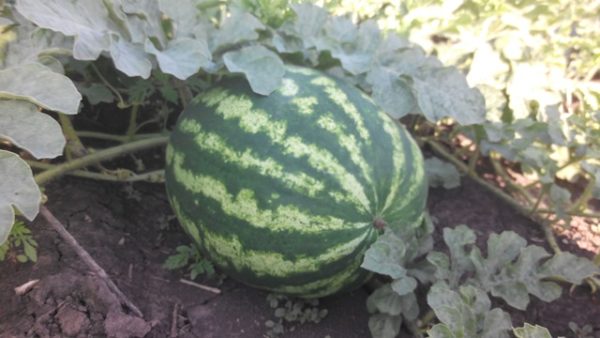
Skory is grown in the southern regions of Russia-Krasnodar, the Caucasus. Also in Ukraine, Kazakhstan, Moldova, Tajikistan. It is possible to grow in the middle lane and even in Siberia, but only in greenhouse conditions with irrigation technologies.
Breeding history
Homeland watermelon is considered Africa. But the watermelons that are now eating ("canteens") first appeared in Egypt. From there, they began to spread throughout the world. In the 20th century, scientists began to struggle with the task of how to make a watermelon more versatile - long storage while preserving the taste and richness. This was successfully done by the Americans.This is how the first varieties of Crimson Sweet appeared, and from them there appeared an improved variety - a producer.
The main regions of growth: USA, Russia, Ukraine, Kazakhstan, Tajikistan, China.
Advantages and disadvantages
The positive features include:
- Sweet
- Large
- Fragrant
- matures early
- disease resistant
Negative:
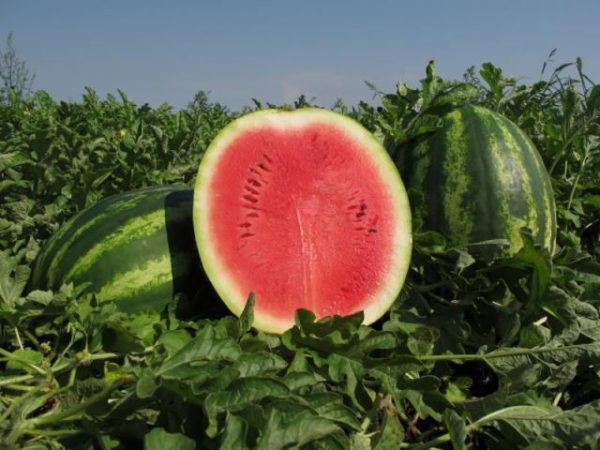
- Capricious
- Depending on weather conditions
- requires regular watering and special irrigation dressing
- inside does not always have time to keep up
Planting seeds for seedlings
It is best to choose early ripening seeds, with a period of about 90 days, or hybrids that are more resistant to cold. Seeds for planting need to plant in late April-early May.
As the soil is suitable mixture of sawdust, soil and humus, you can add peat. The proportion should be 3: 1. In order not to bother, in the country shop you can buy a special soil for melons. It contains all the necessary components.
Before you start planting, the seeds need to prepare:
- Immerse in a glass of water with a 3% solution of salt.
- Seeds that have settled to the bottom, washed in gauze under running water
- to dry
- warm for 2 hours under a temperature of 55-60 degrees.
- hold in potassium permanganate for half an hour
- put in gauze on the lock-wait proklyuvki.
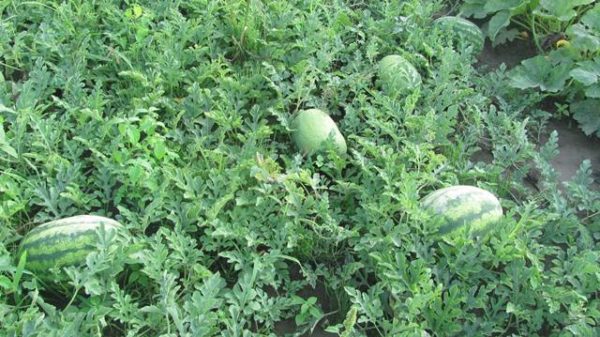
Planting technology:
- to make holes in the prepared pots with soil
- plant sprouted seed
- To water.
- For quick germination cover with a film and put in a warm place.
Planting in open ground
In order to plant watermelon seeds in open ground, you need to choose a place. It should be sunny, warm. Nearby must not grow onion plants, tomatoes, cabbage. You also can not be planted in a place where previously melted gourd. First you need to dig up the ground, free from weeds. Fertilize sawdust, humus.
Planting technology:
- Make grooves
- Sift the seeds to a depth of 5 cm at a distance of 2 cm from each other
- Pour warm water.
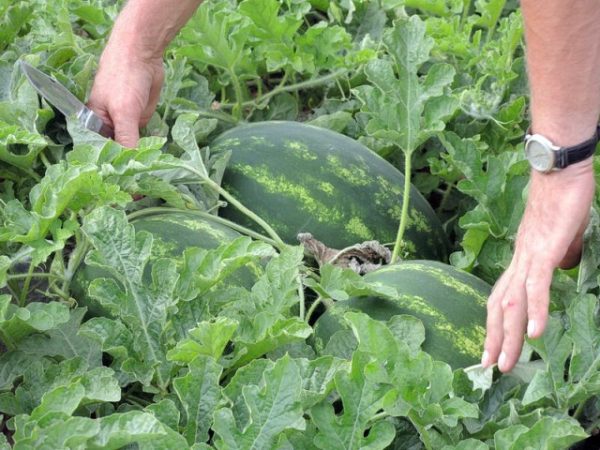
Care and cultivation
Top dressing. A month after planting, when the lashes appear, you need to fertilize watermelon with mullein (1: 6), superphosphate (1:15). The next feeding to do, when they will be ovaries.
Watering. You need to water twice a day during active growth. Then it will be enough 1 time per week. When fruits appear, watering stops.
Stability. Watermelon constantly need heat. The optimum temperature is 25-30 degrees.
A haircut. In time to cut the tops of the shoots, so that the fruits were large.
Breeding
Watermelons are propagated by seeds. In nature, the fruit can fall, split, and the seeds attach to the ground.
Seedless watermelons multiply by pollinating mother and father varieties. There is no long offspring.
Features artehniki
- Variety Producer is extremely capricious. Hard to bear the change of weather, any overtime in the care.
- Disease resistant stem rot and anthracnose.
- High yield.
- The percentage of seed germination to 95%.

Diseases and pests
Despite the fact that rot and anthracnose producer immunityThere are many other pests and diseases that need to be known.
Gourd Aphid. A harmful insect that infects the stalks of watermelon. Black spots appear on them, the stems themselves curl. To save the watermelon, you need to completely remove the sick shoots.
Spider mite. As a rule, they appear when seedlings are planted.A web forms where a tick sits under the leaves. The seedling in turn begins to dry out gradually. To prevent infection on the entire plant, the affected sheets should be burned. Also regularly spray pest control products.
Mealy dew. Type of fungus. Stems become covered with white spots, gradually drying out. When this fungus appears on the watermelon, you need to remove the diseased stems and spray it with a solution of caratan suspension.
Root rot. Morbid fungi in the soil. The plant quickly fades and dies. To prevent this, you need to check in advance the composition of the soil (special laboratory, etc.)
General disease prevention
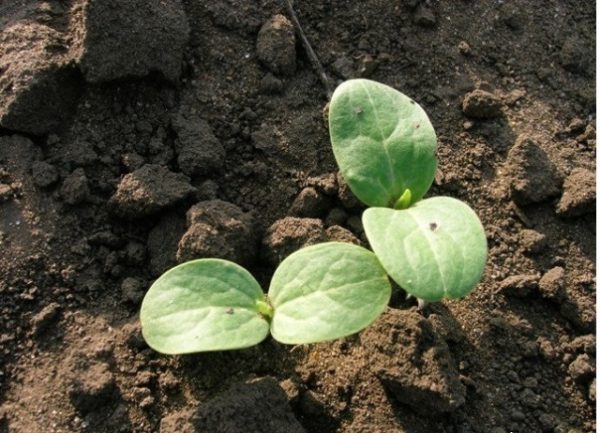
Inspect plants daily, remove diseased leaves and stems in time.
Many gardeners speak positively of this variety. First, because of the sweet and tasty fruit. Secondly, despite the intolerance of changing the weather, he is quite tenacious. Thirdly, it can be stored in a cold place for up to six months.
